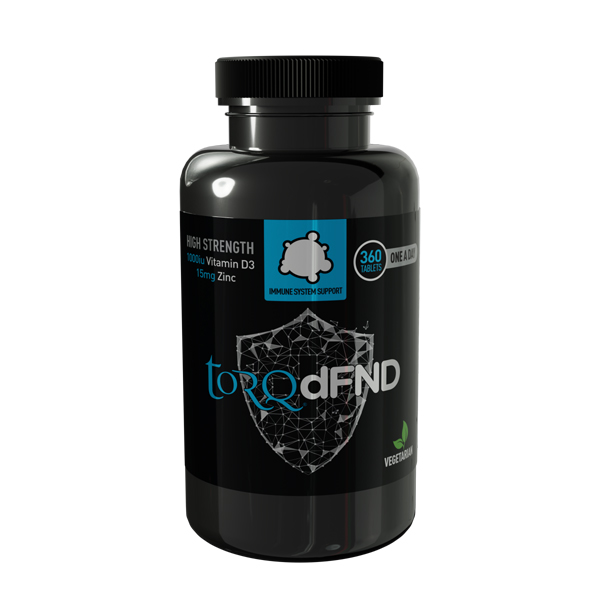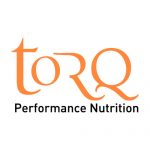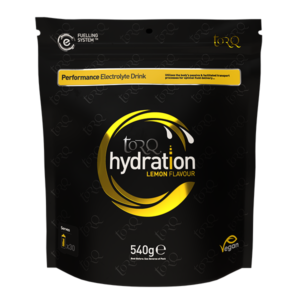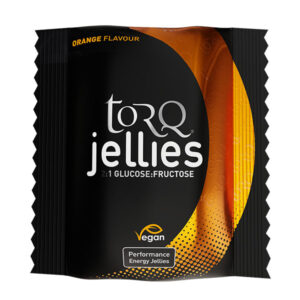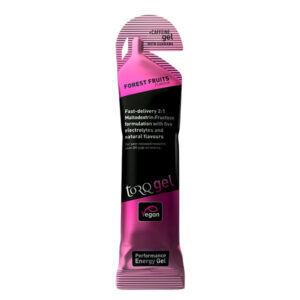
Περιγραφή
-
- Supports Normal Immune Function
- High Strength Formulation1000
- iu Vitamin D3 (500% NRV)
- 15mg Zinc (156% NRV)
- One-a-Day Tablet
TORQ dFND is a one-a-day tablet containing a potent concentration of Vitamin D3 and Zinc to support the normal functioning of the immune system. Vitamin D3 also helps to maintain normal bone and muscle function and Zinc, the maintenance of normal skin, hair & nails.
Each TORQ dFND tablet contains 1000iu Vitamin D3 and 15.6mg Zinc at a potent 500% and 156% of daily reference values respectively. Both of these nutrients have been found to be deficient in the human body with Vitamin D being at lower levels in the winter months in particular and Zinc deficiency especially common in those following a vegetarian or vegan diet.
There is good reason to take this supplement all year round especially if you spend extensive periods of time indoors or restrict the amount of sunshine to your skin during the summer months.
We strongly encourage you to read our Immune System Support Resources so that you understand how this product fits into a healthy lifestyle and balanced diet.
Our other Immune System Support product TORQ aTAC is to be taken at the first sign of infection, should your immune defences be breached.
Take 1 tablet per day, preferably with food and away from any caffeine containing foods/beverages
Both TORQ dFND and TORQ aTAC products were developed off the back of extensive research carried out at the beginning of the coronavirus pandemic when we were highly motivated to learn more about immunity and how we might be able to help people to look after themselves. We strongly urge you to read our Immune System Support Resources if you haven’t done so already, because cultivating a healthy immune system isn’t simply about taking supplements, it’s about addressing your nutrition in general, exercising and knowing when you’re likely to be most susceptible to infection and taking action to avoid putting your immune system to the test.
TORQ dFND has been formulated as a one-a-day solution, so that the i’s are dotted and t’s crossed with regard to your ongoing immune system support. In order to fully understand the benefits of taking this product, we discuss both Vitamin D3 and Zinc here:
Vitamin D
Vitamin D is produced after UV rays from sunlight are absorbed by the skin. Vitamin D can also be consumed within foods, however, very few foods contain the vitamin with sufficient quantities. Once sent to the liver and kidneys, Vitamin D is converted into Vitamin D3, the active form of the Vitamin D which provides the physiological benefits. As the majority of daily Vitamin D requirements are provided from natural sunlight, a person’s lifestyle, ethnicity and geographical location can have significant impacts vitamin D production. Therefore, if you lead an indoor lifestyle, have darker skin (the evolutionary protection mechanism against UV rays) or reside in locations which typically have less hours of sunlight, then you may find yourself at risk of vitamin D deficiency. Of course, there are also seasonal variations, which impact the quantity, and strength of UV radiation throughout the year and there is no escaping the fact that we are all advised to protect our skin from sunlight to avoid the risk of skin cancer.
Vitamin D supplementation has been shown to support both the innate and adaptive immune systems by providing an enhanced capacity to immediately attack and memorise infections that the human biological systems are commonly exposed to.
Research from Owens et al (2018) highlights that Vitamin D receptors are found in high quantities of cells responsible for the immune system such as monocytes, macrophages and neutrophils, which suggest that Vitamin D3 plays a pivotal role in the regulation of combat against infection. Not only are these receptors found in high quantities, but research from Liu and colleges (2006) highlighted that Vitamin D also stimulates the quantity of cells produced responsible for optimal function of the innate immune system (immediate attack against flu and other viruses).
Halliday et al (2011) explored the concept of a vitamin D threshold on development of the common cold and flu. Athletes who had a circulating Vitamin D concentration of 95m.mol/L-1 or above had significantly less illness episodes than those with Vitamin D values under this threshold. Further research from He et al (2011) also established that endurance athletes with low Vitamin D availability who processed symptoms of upper respiratory tract infections, had more symptom days with a greater severity than those with high quantities of circulating Vitamin D.
Although the primary focus of our TORQ dFND product is on immunity for all, furthering athlete health and performance are key to TORQ’s overall philosophy. From the athletic development perspective, athletes who experience less interruptions caused by illness, can therefore maintain an overall higher training load and consistency leading to positive training outcomes, such as improved strength and/or endurance. It should also be noted that supplementation with Vitamin D3 extends beyond immunity for athletes and physically active people.
Research exploring Vitamin D has also considered its effects on bone health and muscle function. As Vitamin D is also a key regulator of calcium absorption, we know that this has a large influence on bone mineralization and strength. Athletes participating in non-weight baring sports such as cycling and swimming and yoga to name a few, may significantly reduce the risk of developing stress fractures caused by unaccustomed exercise from unfamiliar workloads, further supporting the role of vitamin D on injury prevention and management (Barry et al,. 2002). Finally, vitamin D has been shown to have positive implications on muscle strength and function, however the largest benefits have been recorded in elderly, and more sedentary populations (Stockton et al, 2011).
Zinc
Zinc is a mineral and one of the fundamental micronutrients responsible for correct biological function. It cannot be produced by the human body and therefore we must consume a varied diet to source it.
Zinc regulates the innate immune system, the system responsible for immediate attack against infections such as the common cold, flu and viruses. The innate immune system is impaired via zinc deficiency by limiting the function of macrophages, neutrophil and natural killer cells all of which are responsible for attacking foreign bodies and protecting immunity (wintergerst et al., 2007). Similarly to Vitamin C, zinc also plays an essential role within the regulation of free radicals. Free radical production can be significantly increased during periods of oxidative stress when people are exposed to smoke, environmental pollution, certain chemicals and even high load exercise (Fitzgerald, L., 1988), which can lead to a susceptibility of developing cold, flu and viral symptoms. You can learn more about the different immune system types, free radicals and oxidative stress by exploring our Immune System Resource.
Food that typically contains sufficient quantities of zinc are red meat and various sea foods, however those who choose to follow vegan or vegetarian diet may find that the food available to them may be lacking in the nutrient. For example, half a cup of green peas, and half a cup of kidney beans would deliver 1.4mg of Zinc, so with the guideline daily targets for zinc being 10-15mg per day, it’s easy to see how you could fall short.
Due to the training environments of many athletes, such as gyms, changing rooms, swimming pools or even more natural, but dirty environments such as mountain bike or running trails, an athlete may find that they are exposed to pathogens which could affect immunity leading to an increased chance of becoming ill. As we discussed in relation to Vitamin D, for any athlete, unplanned time away from training due to illness is not only inconvenient, but it also disrupts training load and adaptation.
We have to emphasise that we cannot and will not make any claims as to the effectiveness of either TORQ dFND or TORQ aTAC against the symptoms of Covid19. There is insufficient research into this novel virus for any firm recommendations to be made by anyone other than those treatments that have been recognised by the MHRA as being effective against the disease.
In our Immune System Support Resources, we draw attention to the fact that most colds and flu infections come from different types of coronaviruses and that there is perhaps a logic to the notion that what has been proven to work for colds and flu may also apply to Covid19. We also refer to some promising trials into mega-dosing with intravenous Vitamin C in with Covid patients in Wuhan, China in April 2020 towards the start of the pandemic and a more recent update in the Orthomolecular Medicine News (August 2020) referring to currently unpublished data. We also talk in our resources about a recent review (April 2020) by Dr Zhen Yan of the University of Virginia School of Medicine demonstrating the benefits of aerobic exercise with regard to coping with respiratory illness through the production of the antioxidant Extracellular Superoxide Dismutase (EcSOD).
Our plan is to update the Immune Support Resources regularly as the research comes in. For instance, at the time of writing this text, nutraingredients.com have published this interesting article (December 2020) where about 350 leading researchers, doctors, healthcare professionals and nutritionists have backed the VitaminC4Covid campaign who support oral mega-dosing with Vitamin C or its use intravenously in intensive care to halt the onset of severe Covid19 symptoms. Their website criticises the suggestion that the use of Vitamin C in the fight against Covid19 is considered by many as being ‘fake information’.
This article also interestingly comments on the importance of Vitamin D and Zinc. Within the text of the article the authors state that:
“The current World Health Organisation (WHO) position on supplementation states that micronutrients, such as vitamins D, C and Zinc are critical for a well-functioning immune system and play a vital role in promoting health and nutritional well-being. There is currently no guidance on the use of micronutrient supplements as a treatment of Covid19.”
Within the same article, the author quotes Patrick Holford, who established the Institute for Optimum Nutrition in 1984 with Nobel Prize-winning Vitamin C researcher Linus Pauling as saying:
“We’ve had 11 viral epidemics this century. The reality is there will be more. Vaccines, by their nature, are reactive. Vitamin C, together with Vitamin D and Zinc are proactive. Keeping one’s immune system strong is a critical part of any anti-viral strategy.”
It’s no coincidence that Vitamin C is a key component of TORQ aTAC and both Vitamin D and Zinc are combined in our TORQ dFND product. Research supports supplementing with these micronutrients to support the immune system and with regard to Vitamin D, even the mainstream media are communicating the UK government’s message that the vulnerable should be supplementing with it to help protect them against Covid19. The government/NHS and are recommending a dose of 400iu. TORQ dFND contains 1,000iu. It is recommended by the NHS that the daily dose should not exceed 4,000iu as this could be toxic.
We can provide insight into the latest research and what ‘might’ help you should you be unfortunate enough to contract Covid19, but ultimately you will have to draw your own conclusions from the information you digest from a variety of sources. Medical treatments have now been approved in the fight against the disease and at the time of writing, proven vaccines are also being rolled out across the country. Let’s hope that in the future, all we need to worry about are colds and flu and that if mutations of Covid19 do exist, more continues to be understood about their effective treatment.
Maintaining a healthy immune system is much more than simply taking supplements as and when you need them. TORQ dFND contains potent doses of Vitamin D and Zinc, which can often be deficient in the human body due to seasonal factors and/or them naturally not being in the foods you eat, so this product exists to address these shortfalls.
TORQ aTAC has been primarily designed to be taken at the point of showing symptoms of an infection and for all intents and purposes, if you’re showing symptoms, this means that you will have failed in protecting yourself in the first place.
Beyond taking dFND daily and having aTAC ready in your first aid kit and for use periodically during higher training loads, there are so many other things you can do to build a healthy immune system and protect yourself from infection. This is why we have researched and reviewed the area of Immune Support so comprehensively and we strongly urge you to read our resources so that you can be armed with all the available information. Exercise offers significant benefits to immunity, but there are also times that it can render you vulnerable to infection. Also, you can’t substitute a healthy well balanced diet with supplementation.
For access to our full range of Immune System Support Resources, click HERE.
| Per Tablet | % Daily Value | |
|---|---|---|
| Vitamin D3 (as Cholecalciferol) | 1000iu | 500% |
| Zinc (as Zinc Citrate) | 15.6mg | 156% |
| % Daily Value = %NRV (Nutrient Reference Value) | mg = Milligram | iu = International Units |
Other Ingredients: Microcrystalline Cellulose, Silicon Dioxide, Magnesium Stearate.
Allergy Information: No allergens. No gluten containing ingredients used.
No Preservatives // No Colours // No Artificial Sweeteners // Wheat-Free // Dairy-Free // Suitable for Vegetarians
References in support of TORQ dFND formulation:
NHS Website: Vitamin D (vitamins & minerals). General recommendations for daily consumption and Covid19.
Urashima, M., Segawa, T., Okazaki, M., Kurihara, M., Wada, Y. and Ida, H., 2010. Randomized trial of vitamin D supplementation to prevent seasonal influenza A in schoolchildren. Am J Clin Nutr, May;91(5):1255-60. doi: 10.3945/ajcn.2009.29094. Epub 2010 Mar 10.
Owens, D.J., Allison, R. and Close, G.L., 2018. Vitamin D and the athlete: current perspectives and new challenges. Sports medicine, 48(1), pp.3-16.
Bikle, D.D., 2009. Vitamin D and immune function: understanding common pathways. Current osteoporosis reports, 7(2), p.58.
Halliday, T.M., Peterson, N.J., Thomas, J.J., Kleppinger, K., Hollis, B.W. and Larson-Meyer, D.E., 2011. Vitamin D status relative to diet, lifestyle, injury, and illness in college athletes. Medicine and science in sports and exercise, 43(2), pp.335-343.
He, C.S., Fraser, W.D., Tang, J., Brown, K., Renwick, S., Rudland-Thomas, J., Teah, J., Tanqueray, E. and Gleeson, M., 2016. The effect of 14 weeks of vitamin D3 supplementation on antimicrobial peptides and proteins in athletes. Journal of sports sciences, 34(1), pp.67-74.
Sly, L.M., Lopez, M., Nauseef, W.M. and Reiner, N.E., 2001. 1α, 25-Dihydroxyvitamin D3-induced monocyte antimycobacterial activity is regulated by phosphatidylinositol 3-kinase and mediated by the NADPH-dependent phagocyte oxidase. Journal of Biological Chemistry, 276(38), pp.35482-35493.
Liu, P.T., Stenger, S., Li, H., Wenzel, L., Tan, B.H., Krutzik, S.R., Ochoa, M.T., Schauber, J., Wu, K., Meinken, C. and Kamen, D.L., 2006. Toll-like receptor triggering of a vitamin D-mediated human antimicrobial response. Science, 311(5768), pp.1770-1773.
He, C.S., Handzlik, M.K., Fraser, W.D., Muhamad, A.S., Preston, H., Richardson, A. and Gleeson, M., 2013. Influence of vitamin D status on respiratory infection incidence and immune function during 4 months of winter training in endurance sport athletes. School of Sport, Exercise & Health Sciences, Loughborough University.
Owens, D.J., Allison, R. and Close, G.L., 2018. Vitamin D and the athlete: current perspectives and new challenges. Sports medicine, 48(1), pp.3-16.
Bikle, D.D., 2009. Vitamin D and immune function: understanding common pathways. Current osteoporosis reports, 7(2), p.58.
Shankar, A.H. and Prasad, A.S., 1998. Zinc and immune function: the biological basis of altered resistance to infection. The American journal of clinical nutrition, 68(2), pp.447S-463S.
Rink, L. and Haase, H., 2007. Zinc homeostasis and immunity. Trends in immunology, 28(1), pp.1-4.
Bonaventura, P., Benedetti, G., Albarède, F. and Miossec, P., 2015. Zinc and its role in immunity and inflammation. Autoimmunity reviews, 14(4), pp.277-285.
Read, S.A., Obeid, S., Ahlenstiel, C. and Ahlenstiel, G., 2019. The role of zinc in antiviral immunity. Advances in nutrition, 10(4), pp.696-710.
Blazsek, I. and Mathe, G., 1984. Zinc and immunity. Biomedicine & pharmacotherapy= Biomedecine & pharmacotherapie, 38(4), pp.187-193.
Gruber, K. and Rink, L., 2013. The role of zinc in immunity and inflammation. In Diet, Immunity and Inflammation (pp. 123-156). Woodhead Publishing.
Prasad, A.S., 1998. Zinc and immunity. In Molecular and Cellular Effects of Nutrition on Disease Processes (pp. 63-69). Springer, Boston, MA.
Wintergerst, E.S., Maggini, S. and Hornig, D.H., 2007. Contribution of selected vitamins and trace elements to immune function. Annals of Nutrition and Metabolism, 51(4), pp.301-323.
References in support of TORQ aTAC formulation:
De Tullio, M. C., 2010. The Mystery of Vitamin C. Department of Plant Biology and Pathology, University of Bari: Nature Education 3(9):48.
Pham-Huy, L.A., He, H. and Pham-Huy, C., 2008. Free radicals, antioxidants in disease and health. International journal of biomedical science: IJBS, 4(2), p.89.
Fitzgerald, L., 1988. Exercise and the immune system. Immunology today, 9(11), pp.337-339.
Carr, A.C. and Maggini, S., 2017. Vitamin C and immune function. Nutrients, 9(11), p.1211.
Hickey, S. and Roberts, H., 2005. Misleading Information on the Properties of Vitamin C. PLoS Med 2(9): e307.
Legault, Z., Bagnall, N. and Kimmerly, D.S., 2015. The Influence of Oral L-Glutamine Supplementation on Muscle Strength Recovery and Soreness Following Unilateral Knee Extension Eccentric Exercise. Int J Sport Nutr Exerc Metab: Oct;25(5):417-26. doi: 10.1123/ijsnem.2014-0209. Epub 2015 Mar 26.
Calder, P.C., Yaqoob, P., 1999. Glutamine and the immune system. Amino Acids: 17(3):227-41.
Ren, W., Li, Y., Yu, X., Luo ,W., Liu, G., Shao, H. and Yin, Y. 2013. Glutamine modifies immune responses of mice infected with porcine circovirus type 2. Br J Nutr: Sep 28;110(6):1053-60. doi: 10.1017/S0007114512006101. Epub 2013 Jan 28.
Gleeson, M. 2008. Dosing and Efficacy of Glutamine Supplementation in Human Exercise and Sport Training. The Journal of Nutrition: Volume 138, Issue 10, pp. 2045S–2049S.
Barrett, B., 2003. Medicinal properties of Echinacea: a critical review. Phytomedicine, 10(1), pp.66-86.
Caruso, T.J. and Gwaltney Jr, J.M., 2005. Treatment of the common cold with echinacea: a structured review. Clinical Infectious Diseases, 40(6), pp.807-810.
Shah, S.A., Sander, S., White, C.M., Rinaldi, M. and Coleman, C.I., 2007. Evaluation of echinacea for the prevention and treatment of the common cold: a meta-analysis. The Lancet infectious diseases, 7(7), pp.473-480.
Richard Z. Cheng, R.Z. 2020. Preliminary Report of Chinese High Dose Vitamin C for Covid-19 Treatment Studies. Orthomolecular Medicine News Service, August 16, 2020. (unpublished)
Επιπλέον πληροφορίες
| Βάρος | 0.300 κ. |
|---|---|
| Γεύσεις | Organic Apple, Organic Banana, Organic Mango, Organic Orange |
| Brand | TORQ |
| Στόχος | Υγεία |
